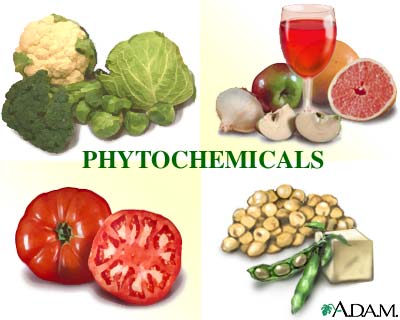
Did you take French literature in high school or college? If your answer is no, you may as well skip to the third sentence in the paragraph that follows. But if your answer’s yes, then you’re probably familiar with Molière’s The Bourgeois Gentleman. The bourgeois gentleman is a lovable but pompous character who’s surprised to discover he’s been speaking prose all his life without knowing it.
Your relationship with phytochemicals is probably something like that. You’ve been eating them all your life without knowing it. The following are all phytochemicals:
- Carotenoids, the pigments that make fruits and vegetables orange, red, and yellow (dark green vegetables and fruits like kiwi contain these pigments, too, but green chlorophyll masks the carotenoids’ colors)
- Thiocyanates, the smelly sulfur compounds that make you turn up your nose at the aroma of boiling cabbage
- Daidzein and genistein, hormonelike compounds in many fruits and vegetables
- Dietary fiber
- Keep your cells healthy
- Help prevent the formation of carcinogens (cancer-producing substances)
- Reduce cholesterol levels
- Help move food through your intestinal tract
Did you notice that no minerals appear in the list of phytochemicals? The omission is deliberate. Plants don’t manufacture minerals; they absorb them from the soil. Therefore, minerals aren’t phytochemicals.

No comments:
Post a Comment